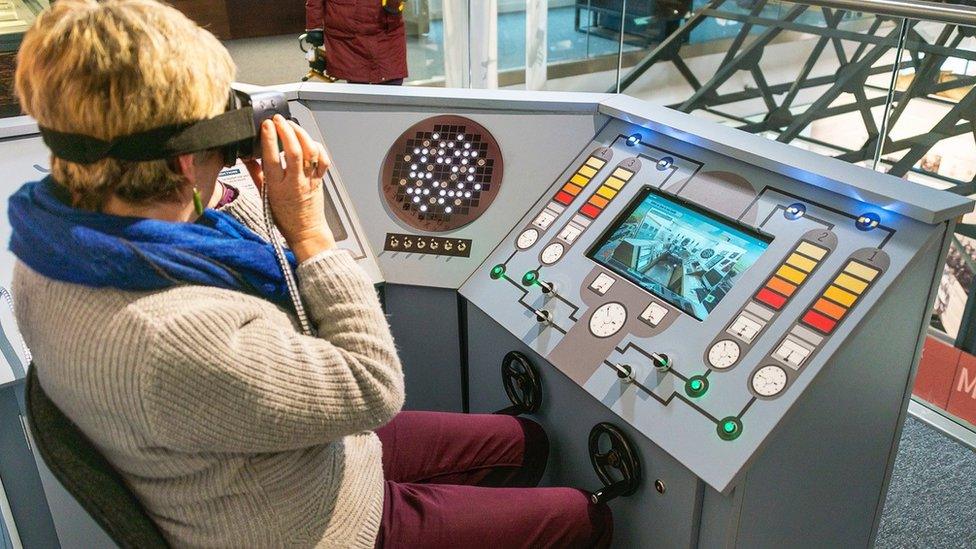Chapelcross nuclear site 'nothing like The Simpsons'
- Published

Visitors will get a glimpse behind the scenes at Scotland's first commercial nuclear power station
A virtual reality tour is being offered behind the scenes at Scotland's first nuclear power station.
Visitors to the Devil's Porridge Museum in Eastriggs can don a headset to look around the old Chapelcross site.
It will allow them to see into high-security areas including the reactor control room and tritium plant.
Museum chairman Richard Brodie said that although there was a village called Springfield nearby it was hopefully "nothing like" the Simpsons.
The Chapelcross site, near Annan, is currently being decommissioned after its landmark cooling towers were demolished more than 10 years ago.
However, its heyday is being brought back to life by the new exhibition.
The virtual reality (VR) tour allows a glimpse inside the power station where vital elements were also produced for atomic bombs.

The virtual reality tour was produced thanks to exclusive access to the nuclear site
Mr Brodie said: "We have been given exclusive access into the nuclear reactor rooms so we have taken 3D photographs and we now have a virtual reality tour of the reactors to see where the actual nuclear fuel was made and processed into plutonium and tritium.
"You can put on the work coat, you can don the virtual reality glasses and you are actually inside the reactor buildings.
"Springfield is only a few miles down the road but hopefully Chapelcross was nothing like Springfield was in The Simpsons."
As well as the virtual tour, visitors can also hear the story of the site told by people who worked there.
Mr Brodie said some people might be surprised by the important part in weapons production played by the plant.
"The government put out the perspective that it was there to produce electricity but in fact it had a more crucial role in the nuclear arms race," he said.
"It was a very dangerous process in the beginning because they didn't really know what they were dealing with.
"There was a reactor fire at Chapelcross and we get told about it through the eyes of the people that were actually there at that very critical and dangerous moment."
Site closure director John Grierson said the VR experience would give a behind the scenes view to people who would not normally have had access to the site.
"Chapelcross, over its almost 60-year history, has always endeavoured to support the local community in a variety of projects so this new permanent exhibition is a great way to strengthen this connection," he said.

The landmark cooling towers at Chapelcross came down in 2007
Museum collection manager Sarah Harper said the experience had been possible thanks to funding from the Magnox Socio-Economic Fund.
"The virtual reality tour is just one aspect of telling the story of Chapelcross," she said.
"Oral testimonies of real life experiences of Chapelcross employees describing their working lives and the huge impact Chapelcross has had on the local community have been recorded for future generations.
"Visitors will be able to listen to the many interviews we have conducted with past and present employees and enjoy photographs and films of the construction of Chapelcross, as well as the demolition of the four iconic cooling towers in 2007.
"This permanent display will ensure that Scotland's first nuclear power station will be remembered long after the site has been fully decommissioned."